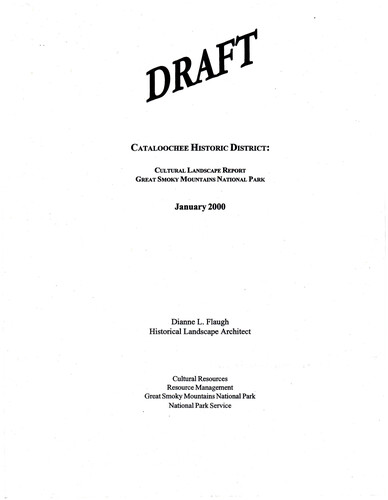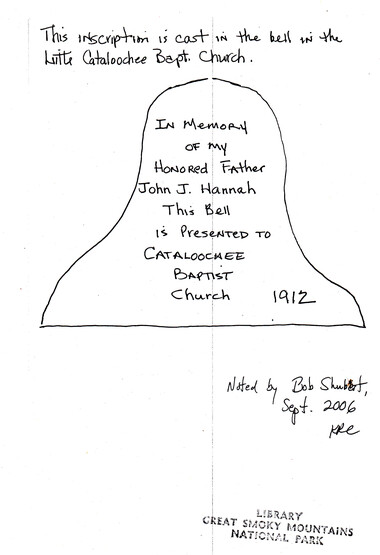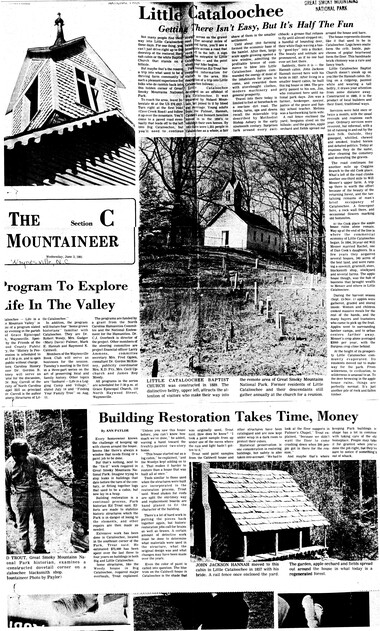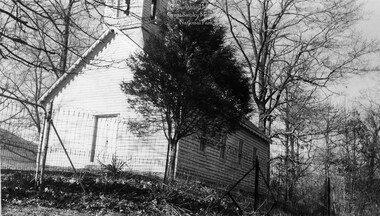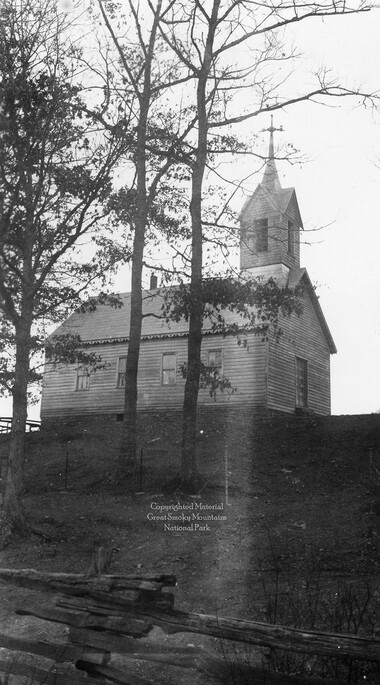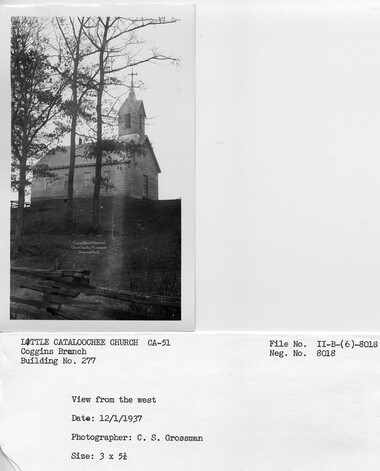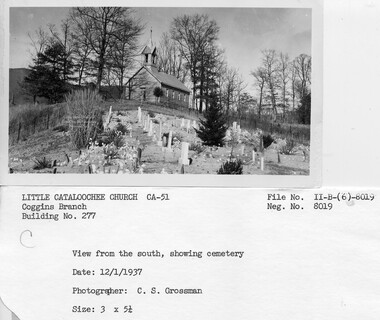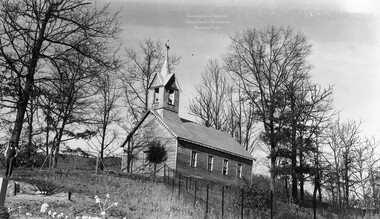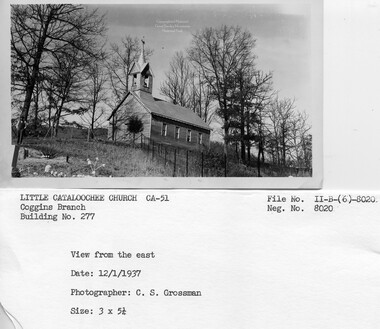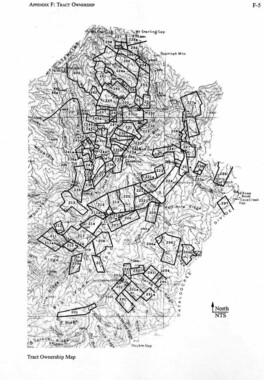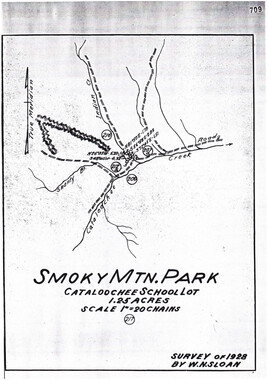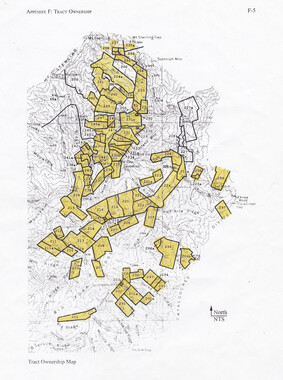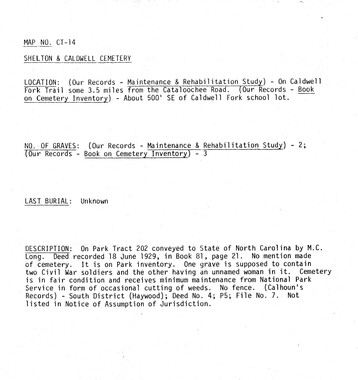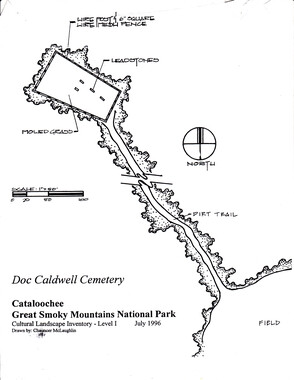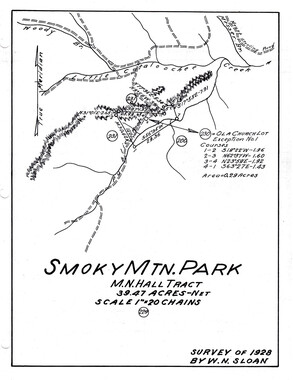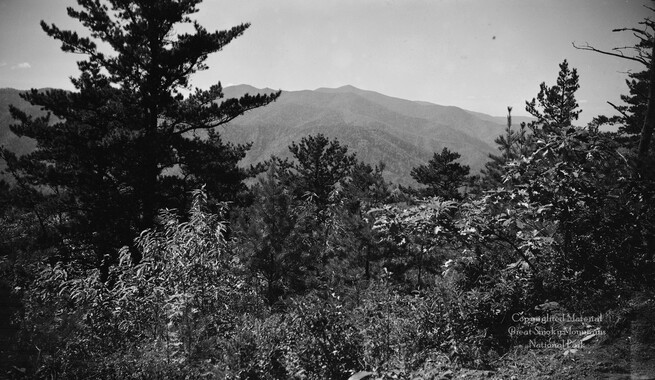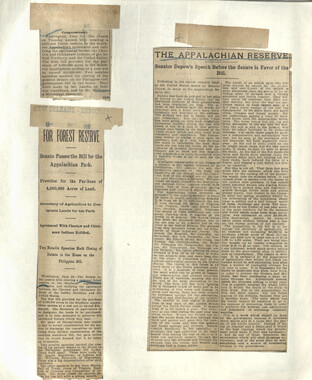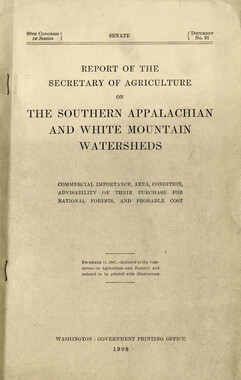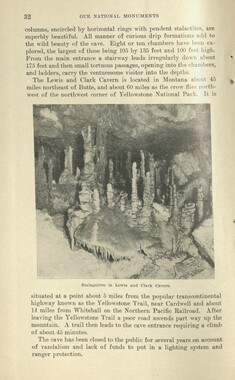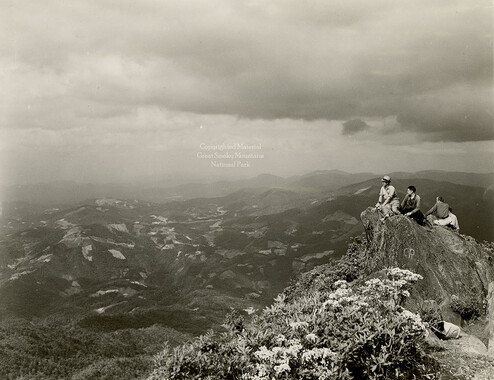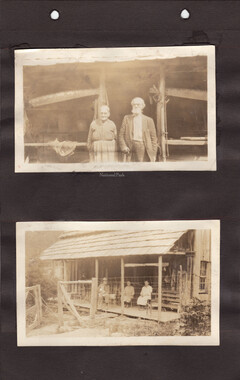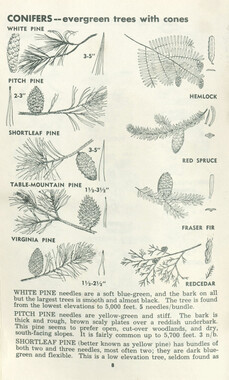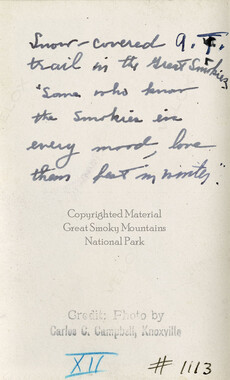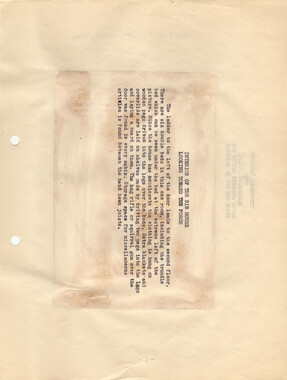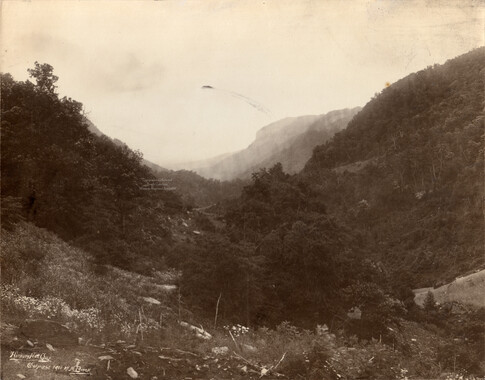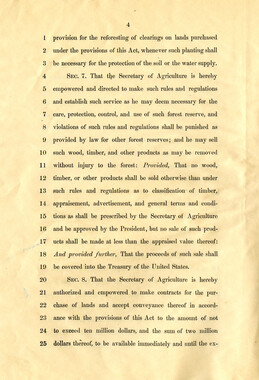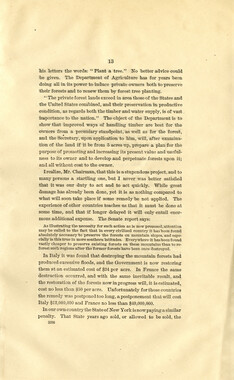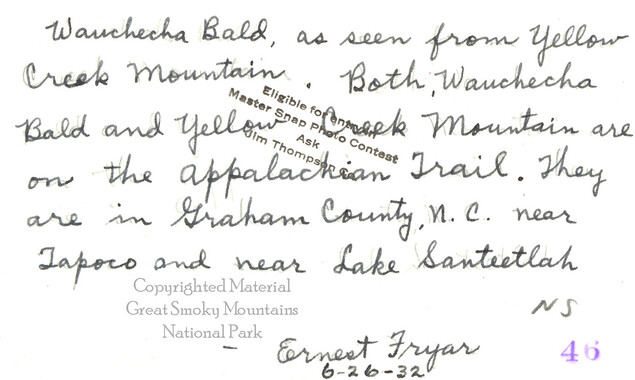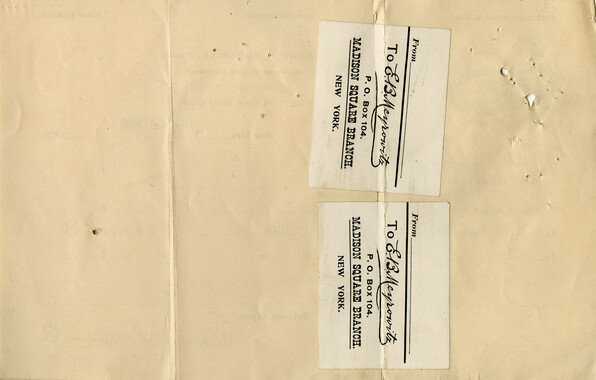Western Carolina University (21)
View all
- Canton Champion Fibre Company (2308)
- Cherokee Traditions (291)
- Civil War in Southern Appalachia (165)
- Craft Revival (1942)
- George Masa Collection (137)
- Great Smoky Mountains - A Park for America (2900)
- Highlights from Western Carolina University (422)
- Horace Kephart (941)
- Journeys Through Jackson (159)
- LGBTQIA+ Archive of Jackson County (85)
- Oral Histories of Western North Carolina (314)
- Picturing Appalachia (6797)
- Stories of Mountain Folk (413)
- Travel Western North Carolina (153)
- Western Carolina University Fine Art Museum Vitreograph Collection (129)
- Western Carolina University Herbarium (92)
- Western Carolina University: Making Memories (738)
- Western Carolina University Publications (2491)
- Western Carolina University Restricted Electronic Theses and Dissertations (146)
- Western North Carolina Regional Maps (71)
- World War II in Southern Appalachia (131)
University of North Carolina Asheville (6)
View all
- Allanstand Cottage Industries (62)
- Appalachian National Park Association (53)
- Bennett, Kelly, 1890-1974 (1463)
- Berry, Walter (76)
- Brasstown Carvers (40)
- Carver, George Washington, 1864?-1943 (26)
- Cathey, Joseph, 1803-1874 (1)
- Champion Fibre Company (233)
- Champion Paper and Fibre Company (297)
- Cherokee Indian Fair Association (16)
- Cherokee Language Program (22)
- Crowe, Amanda (40)
- Edmonston, Thomas Benton, 1842-1907 (7)
- Ensley, A. L. (Abraham Lincoln), 1865-1948 (275)
- Fromer, Irving Rhodes, 1913-1994 (70)
- George Butz (BFS 1907) (46)
- Goodrich, Frances Louisa (120)
- Grant, George Alexander, 1891-1964 (96)
- Heard, Marian Gladys (60)
- Kephart, Calvin, 1883-1969 (15)
- Kephart, Horace, 1862-1931 (313)
- Kephart, Laura, 1862-1954 (39)
- Laney, Gideon Thomas, 1889-1976 (439)
- Masa, George, 1881-1933 (61)
- McElhinney, William Julian, 1896-1953 (44)
- Niggli, Josephina, 1910-1983 (10)
- North Carolina Park Commission (105)
- Osborne, Kezia Stradley (9)
- Owens, Samuel Robert, 1918-1995 (11)
- Penland Weavers and Potters (36)
- Roberts, Vivienne (15)
- Roth, Albert, 1890-1974 (142)
- Schenck, Carl Alwin, 1868-1955 (1)
- Sherrill's Photography Studio (2565)
- Southern Highland Handicraft Guild (127)
- Southern Highlanders, Inc. (71)
- Stalcup, Jesse Bryson (46)
- Stearns, I. K. (213)
- Thompson, James Edward, 1880-1976 (226)
- United States. Indian Arts and Crafts Board (130)
- USFS (683)
- Vance, Zebulon Baird, 1830-1894 (1)
- Weaver, Zebulon, 1872-1948 (58)
- Western Carolina College (230)
- Western Carolina Teachers College (282)
- Western Carolina University (2008)
- Western Carolina University. Mountain Heritage Center (18)
- Whitman, Walt, 1819-1892 (10)
- Wilburn, Hiram Coleman, 1880-1967 (73)
- Williams, Isadora (3)
- Cain, Doreyl Ammons (0)
- Crittenden, Lorraine (0)
- Rhodes, Judy (0)
- Smith, Edward Clark (0)
- Appalachian Region, Southern (2929)
- Asheville (N.C.) (1944)
- Avery County (N.C.) (26)
- Blount County (Tenn.) (195)
- Buncombe County (N.C.) (1680)
- Cherokee County (N.C.) (283)
- Clay County (N.C.) (556)
- Graham County (N.C.) (238)
- Great Smoky Mountains National Park (N.C. and Tenn.) (525)
- Haywood County (N.C.) (3571)
- Henderson County (N.C.) (70)
- Jackson County (N.C.) (4917)
- Knox County (Tenn.) (35)
- Knoxville (Tenn.) (13)
- Lake Santeetlah (N.C.) (10)
- Macon County (N.C.) (420)
- Madison County (N.C.) (216)
- McDowell County (N.C.) (39)
- Mitchell County (N.C.) (135)
- Polk County (N.C.) (35)
- Qualla Boundary (982)
- Rutherford County (N.C.) (78)
- Swain County (N.C.) (2185)
- Transylvania County (N.C.) (270)
- Watauga County (N.C.) (12)
- Waynesville (N.C.) (86)
- Yancey County (N.C.) (72)
- Aerial Photographs (3)
- Aerial Views (60)
- Albums (books) (4)
- Articles (1)
- Artifacts (object Genre) (228)
- Bibliographies (1)
- Biography (general Genre) (2)
- Cards (information Artifacts) (38)
- Clippings (information Artifacts) (191)
- Copybooks (instructional Materials) (3)
- Crafts (art Genres) (622)
- Depictions (visual Works) (21)
- Design Drawings (1)
- Drawings (visual Works) (185)
- Envelopes (73)
- Exhibitions (events) (1)
- Facsimiles (reproductions) (1)
- Fiction (general Genre) (4)
- Financial Records (12)
- Fliers (printed Matter) (67)
- Glass Plate Negatives (381)
- Guidebooks (2)
- Internegatives (10)
- Interviews (815)
- Land Surveys (102)
- Letters (correspondence) (1013)
- Manuscripts (documents) (618)
- Maps (documents) (177)
- Memorandums (25)
- Minutes (administrative Records) (59)
- Negatives (photographs) (6090)
- Newsletters (1290)
- Newspapers (2)
- Notebooks (8)
- Occupation Currency (1)
- Paintings (visual Works) (1)
- Pen And Ink Drawings (1)
- Periodicals (193)
- Personal Narratives (10)
- Photographs (12976)
- Plans (maps) (1)
- Poetry (5)
- Portraits (4568)
- Postcards (329)
- Programs (documents) (181)
- Publications (documents) (2443)
- Questionnaires (65)
- Relief Prints (26)
- Sayings (literary Genre) (1)
- Scrapbooks (282)
- Sheet Music (2)
- Slides (photographs) (402)
- Songs (musical Compositions) (2)
- Sound Recordings (796)
- Specimens (92)
- Speeches (documents) (18)
- Tintypes (photographs) (8)
- Transcripts (322)
- Video Recordings (physical Artifacts) (23)
- Text Messages (0)
- A.L. Ensley Collection (275)
- Appalachian Industrial School Records (7)
- Appalachian National Park Association Records (336)
- Axley-Meroney Collection (2)
- Bayard Wootten Photograph Collection (20)
- Bethel Rural Community Organization Collection (7)
- Blumer Collection (5)
- C.W. Slagle Collection (20)
- Canton Area Historical Museum (2110)
- Carlos C. Campbell Collection (462)
- Cataloochee History Project (64)
- Cherokee Studies Collection (4)
- Daisy Dame Photograph Album (5)
- Daniel Boone VI Collection (1)
- Doris Ulmann Photograph Collection (112)
- Elizabeth H. Lasley Collection (1)
- Elizabeth Woolworth Szold Fleharty Collection (4)
- Frank Fry Collection (95)
- George Masa Collection (173)
- Gideon Laney Collection (452)
- Hazel Scarborough Collection (2)
- Hiram C. Wilburn Papers (28)
- Historic Photographs Collection (236)
- Horace Kephart Collection (861)
- Humbard Collection (33)
- Hunter and Weaver Families Collection (1)
- I. D. Blumenthal Collection (4)
- Isadora Williams Collection (4)
- Jesse Bryson Stalcup Collection (47)
- Jim Thompson Collection (224)
- John B. Battle Collection (7)
- John C. Campbell Folk School Records (80)
- John Parris Collection (6)
- Judaculla Rock project (2)
- Kelly Bennett Collection (1482)
- Love Family Papers (11)
- Major Wiley Parris Civil War Letters (3)
- Map Collection (12)
- McFee-Misemer Civil War Letters (34)
- Mountain Heritage Center Collection (4)
- Norburn - Robertson - Thomson Families Collection (44)
- Pauline Hood Collection (7)
- Pre-Guild Collection (2)
- Qualla Arts and Crafts Mutual Collection (12)
- R.A. Romanes Collection (681)
- Rosser H. Taylor Collection (1)
- Samuel Robert Owens Collection (94)
- Sara Madison Collection (144)
- Sherrill Studio Photo Collection (2558)
- Smoky Mountains Hiking Club Collection (616)
- Stories of Mountain Folk - Radio Programs (374)
- The Reporter, Western Carolina University (510)
- Venoy and Elizabeth Reed Collection (16)
- WCU Gender and Sexuality Oral History Project (32)
- WCU Mountain Heritage Center Oral Histories (25)
- WCU Oral History Collection - Mountain People, Mountain Lives (71)
- WCU Students Newspapers Collection (1923)
- Western North Carolina Tomorrow Black Oral History Project (69)
- William Williams Stringfield Collection (2)
- Zebulon Weaver Collection (109)
- African Americans (390)
- Appalachian Trail (35)
- Artisans (521)
- Cherokee art (84)
- Cherokee artists -- North Carolina (10)
- Cherokee language (21)
- Cherokee pottery (101)
- Cherokee women (208)
- Church buildings (190)
- Civilian Conservation Corps (U.S.) (111)
- College student newspapers and periodicals (2012)
- Dams (108)
- Dance (1023)
- Education (222)
- Floods (61)
- Folk music (1015)
- Forced removal, 1813-1903 (2)
- Forest conservation (220)
- Forests and forestry (1196)
- Gender nonconformity (4)
- Great Smoky Mountains National Park (N.C. and Tenn.) (181)
- Hunting (46)
- Landscape photography (25)
- Logging (119)
- Maps (83)
- Mines and mineral resources (9)
- North Carolina -- Maps (18)
- Paper industry (38)
- Postcards (255)
- Pottery (135)
- Railroad trains (72)
- Rural electrification -- North Carolina, Western (3)
- School integration -- Southern States (2)
- Segregation -- North Carolina, Western (5)
- Slavery (5)
- Sports (452)
- Storytelling (243)
- Waterfalls -- Great Smoky Mountains (N.C. and Tenn.) (66)
- Weaving -- Appalachian Region, Southern (280)
- Wood-carving -- Appalachian Region, Southern (328)
- World War, 1939-1945 (173)
Cataloochee tract 230: Ola Baptist Church Lot
Item
Item’s are ‘child’ level descriptions to ‘parent’ objects, (e.g. one page of a whole book).
-
-
CATALOOCHEE HISTORIC DISTRICT: CULTURAL LANDSCAPE REPORT GREAT SMOKY MOUNTAINS NATIONAL PARK January 2000 Dianne L. Flaugh Historical Landscape Architect Cultural Resources Resource Management Great Smoky Mountains National Park National Park Service CHAPTER 4: INDIVIDUAL TRACTS 127 Little Cataloochee Ola Missionary Baptist Church Tract (230) Location Ola Missionary Baptist Church is found in Little Cataloochee on a narrow razorback ridge. To the north is the site ofOla along Little Cataloochee Creek and to the south are the homesites along Coggins Branch. History J. V. Woody sold the tract upon which the church stands1 to the D. J. Cook and H. T. Hannah, Deacons of the Missionary Baptist Church, Cataloochee Township in 1892. Records show that the church was built in 1889, or 1890.1t is believed that area residents constructed the church under the direction of Doc Hall. Lumber came from the Suncrest Lumber Company.2 When the Park acquired the church and its congregation disbanded, the church record book was left at the site. In the 1930s the book was stolen and never recovered. With it went the only source of written information and leaving oral history as the primary source of information. 3 No preacher was in residence at Little Cataloochee, and the church depended upon circuit riding preachers coming to the church. Collections taken during the service paid the visiting preachers. Both Rev. T. Frank Arrington and Rev. D. C. Davis held services at the church. Church services were held on the second weekend of each month and revivals were held in the late summer or fall. Singing school (old harp and sharp note) was held in the springtime. The church building also served as a schoolhouse, in which Robert Hannah was one of the school teachers. 4 When J. V. Woody sold his remaining property in 1907, to Americus Hall he reserved a one-half acre for a cemetery next to the church. Grave markers are inscribed with familiar Cataloochee family names. Some of the stones are uninscribed. The church was sold to the NCPC on December 16, 1929. Services likely continued for a time after acquisition by the NCPC and the congregation probably used the money received in the sale to make improvements, including a continuous foundation and metal roof. Vegetation Given the churches location on a razorback ridge, the land was probably never cultivated. An early vegetation study (ca. 193 8) indicates that a small area to the to the east of the church was cove, hardwood forest while land to the north, south, and west was cleared. Photographs taken by Wilburn show the cemetery. The grave areas appear clear of grassy vegetation while the surrounding area is covered with long grass. Within the grave area are seen yucca, shrubs and evergreen trees. The area has also been decorated 128 CULTURAL LANDSCAPE REPORT: CATALOOCHEE HISTORIC DISTRICT with flowers. There are also trees on the ridge by the church and down slope from the cemetery (figures 47 and 48). Circulation Figure 47. Ola Missionary Baptist Cemetery, ca. 1930. Wilburn Photo Album, GRSM Archives. Figure 48. Ola Missionary Baptist Cemetery, ca. 1930. Wilburn Photo Album, GRSM Archives. Little Cataloochee Road ran past Ola Missionary Baptist Church and provided access to the site. There is no information about historic pathways on the church parcel. Structures, Furnishings, and Objects Lumber for construction of the church came from the Suncrest Lumber Company. It was constructed of chestnut and poplar timber supported on rock underpinning. It also boasts a decorative cur bargeboard. "Will Messer built the pulpit and steeple, which houses the four hundred pound bell donated by William Hannah," an area lawyer and son of John Jackson Hannah. 5 Except for improvements made by the congregation after the property was acquired for the park no alterations of the church have been made. The early photographs taken by Wilburn (ca. 1930) show that the cemetery was CHAPTER 4: INDIVIDUAL TRACTS 129 fenced with woven wire fence supported by wood posts. The community apparently added decorative wire fencing supported by metal posts after the sale of the property. This surrounded both the cemetery and the church and also separated the church from the cemetery. Views and Vistas Located on the crest of a hill, the churchyard provided an excellent vantage point overlooking the surrounding agricultural scene of cleared fields and farmsteads. Although trees were located in the churchyard they would not have obscured a view ofthe church ·from surrounding farmsteads and to travelers along the Little Cataloochee Road. Existing Conditions This area is designated as a historic preservation site within Little Cataloochee. It located within subzone Natural Environment-Type II, which emphasizes the natural environment, yet allows access to extant cultural resources. The church continues to be used for an annual Little Cataloochee homecoming and is open to visitors as an interpretive site. The area surrounding the church and cemetery has become more thickly forested. This forest obscures views to and from the church. Little Cataloochee road is now a horse and foot trail through this tract. It also serves as a park administrative road providing access to the Dan Cook Cabin, which lies south of the church. Two road spurs dead end on either side of the church. One provides access to the cemetery, while the other parallels the main road but lies between the road and churchyard fence (figure 49). Figure 49. 0\a Missionary Baptist Church, 1996. Note fencing and steep pathway. The church remains on site with no modifications to the structure having been done by the NPS. On the grounds surrounding the church the NPS has added picnic tables (ca. 130 CULTURAL LANDSCAPE REPORT: CATALOOCHEE HISTORIC DISTRICT mid 1960s) comfort stations (ca. mid 1960s) and hitching posts (1994). The four-foot high decorative fencing extends along the base of the slope between the church and main road, leaves an opening at the drive then, turns up slope meeting the cemetery fence. There is also a fence between the church and the forest edge on the south. This fence at one time connected with the decorative fence that surrounds the cemetery, as does the fence running along the steep edge of the drive. The cemetery no longer has trees or shrubs growing amongst the graves. The cemetery is now kept mown and grass covers the gravesites. Analysis and Evaluation Ola Missionary Baptist Church filled an important role in the community life of Little Cataloochee. This is reflected in its prominent location atop a ridge. This was also a central location, with homes found both south and north of the church. The church itself is unchanged since the establishment of the Park. The surrounding land however has reforested, impacting views to and from the church site. Landscape practices within the cemetery have changed since the 1930s and reflects contemporary maintenance practices. Re-establishing shrubs or clearing grass from the gravesites would create maintenance problems. NOTES 1 Woody purchased his property from the Love holdings in 1881. 2 Elizabeth Powers and Mark Hannah, Cataloochee: Lost Settlement of the Smokies (Charleston SC: Blazer Print, 1983), 326-327. 3 Ed Trout, "Draft Cataloochee Historic Structures Reports: Palmer Chapel, Beech Grove School, and Little Cataloochee Baptist Church," (Great Smoky Mountains National Park, nd), 16. 4 Ibid., 16-17. 5 Roy Carroll and Raymond H. Pulley, "Historic Structures Report: Jim Hannah Cabin, Will Messer Bam, and Dan Cook Cabin," (Appalachian State University, Department of History, 1976), 19-20. ( ( errsr·;' ~oes sc / ( I ~ ft'~!' ...,/~cOR.A.TIVIiiO MC:OU ~ Ola (Little Cataloochee) Missionary Baptist Church and Cemetery Cataloochee Great Smoky Mountains National Park Cultural Landscape InventQl)'- Level I July 1996 Drawn by: o.-Mel.ashlia ....I.. ..... 0
Object
Object’s are ‘parent’ level descriptions to ‘children’ items, (e.g. a book with pages).
-
This .30-acre tract 230 in Cataloochee was owned by Ola School. While, in general, the Great Smoky Mountains region was sparsely populated, the Cataloochee Valley remained an exception. By 1900, the population of Cataloochee had grown to 1,000 residents living in hundreds of log and frame homes. A few historic buildings have been preserved on site, including two churches, a school, several homes, and outbuildings. The North Carolina Park Commission was tasked with purchasing land for the Great Smoky Mountains National Park and people living in Cataloochee were among those displaced. Cataloochee families continue to return for annual reunions. In 2001, the National Park Service re-introduced elk into the valley.
-
